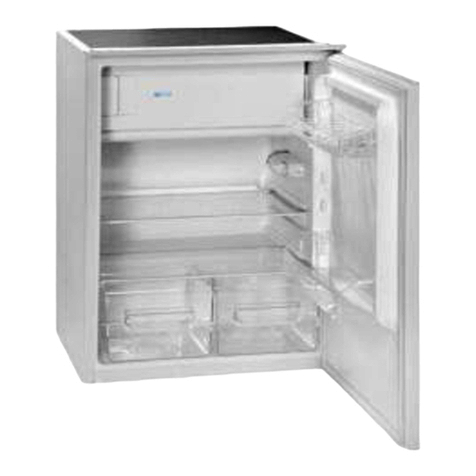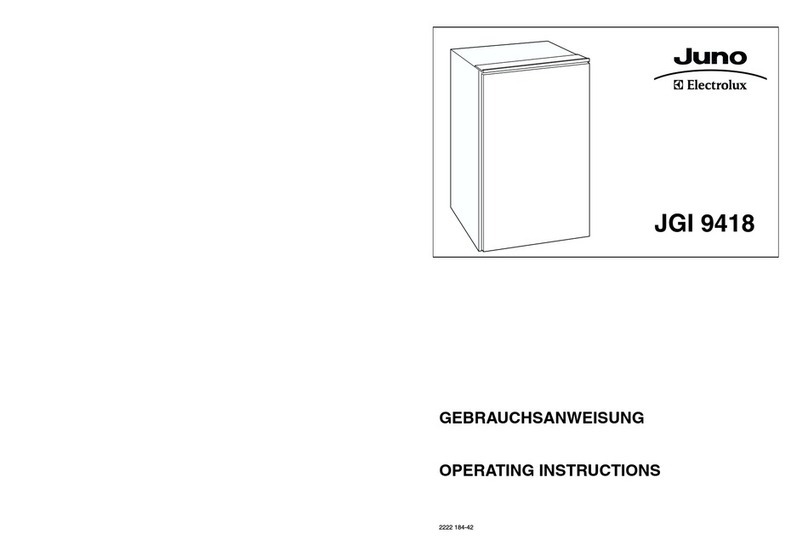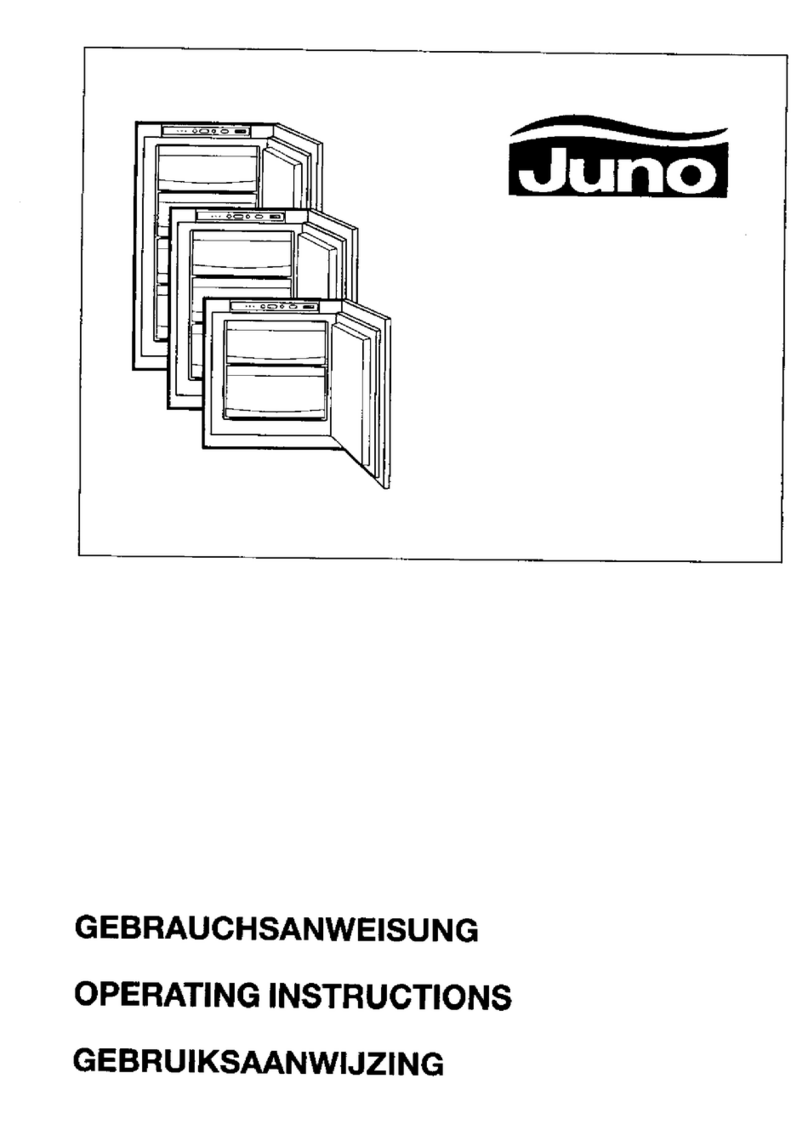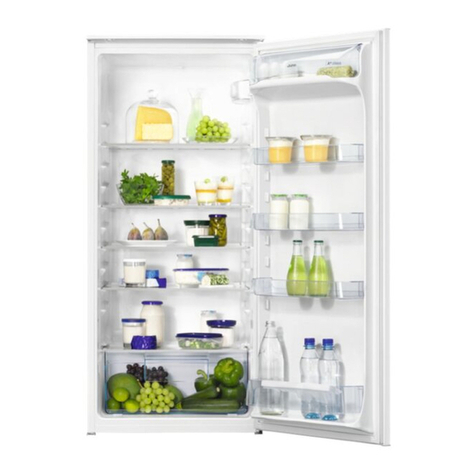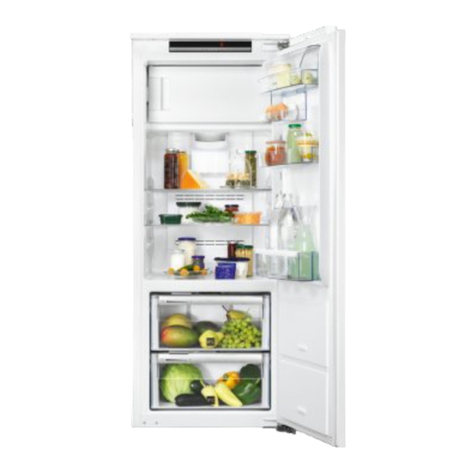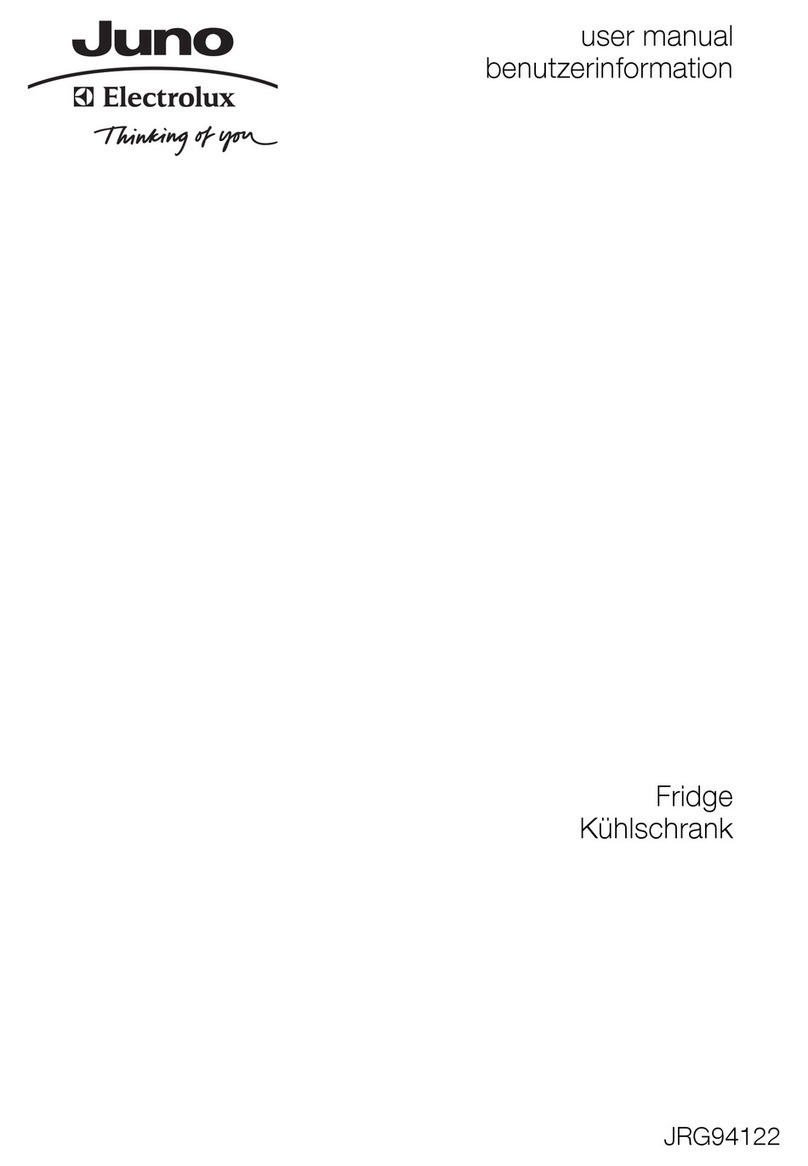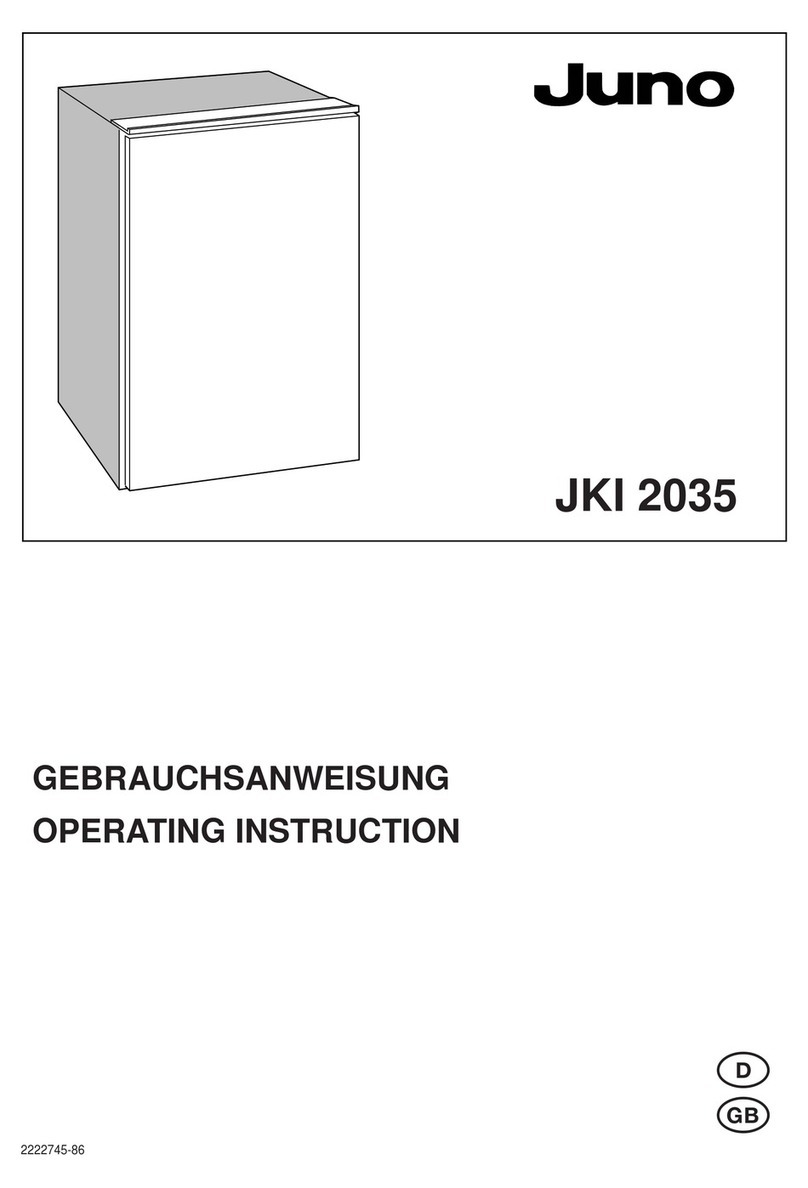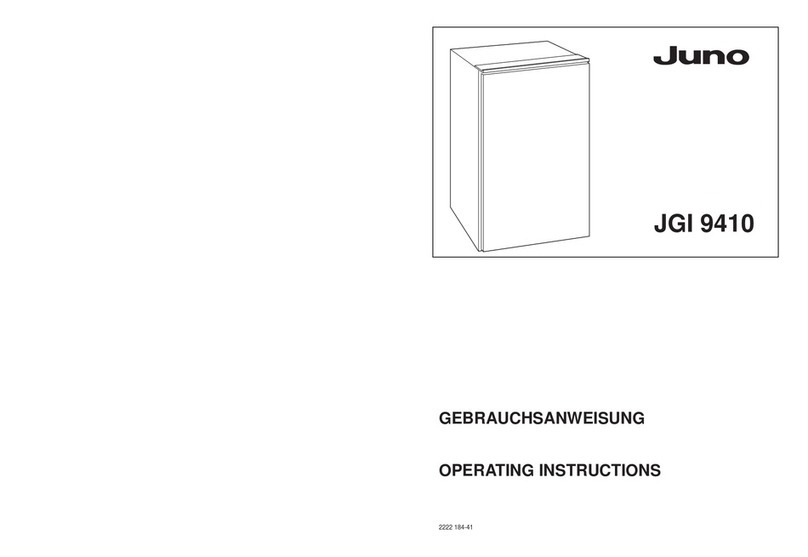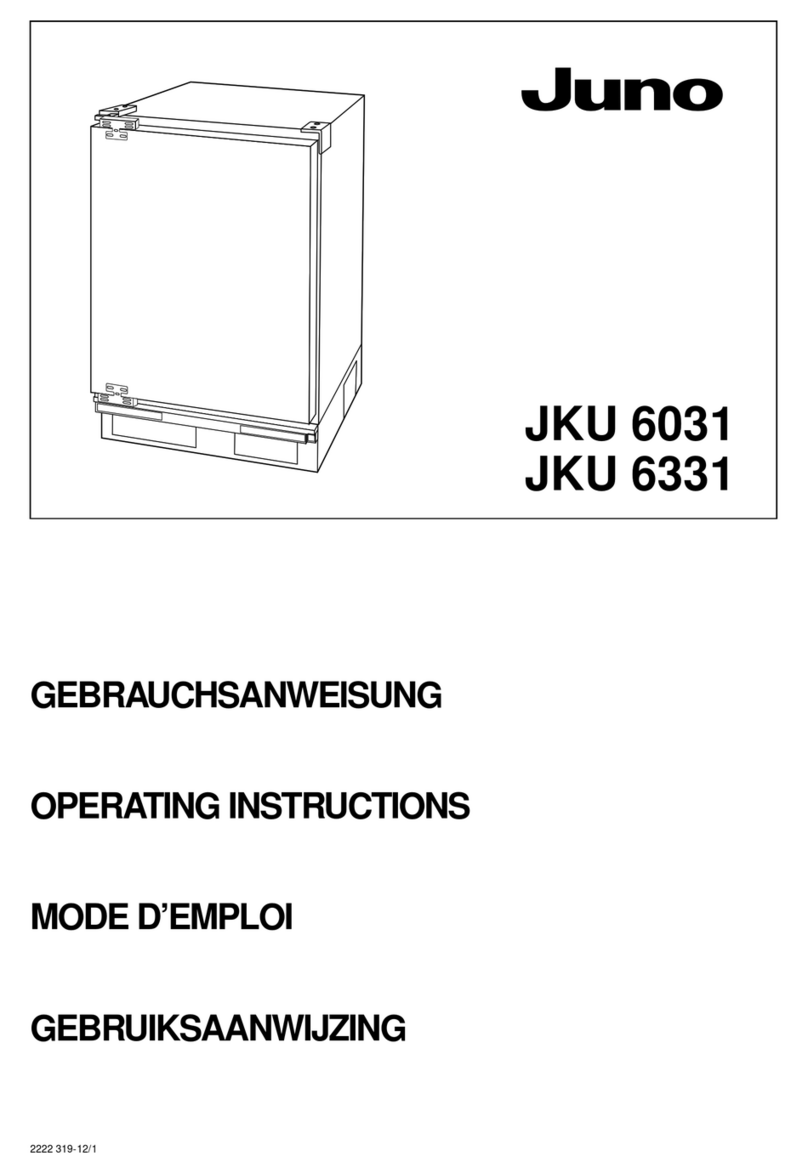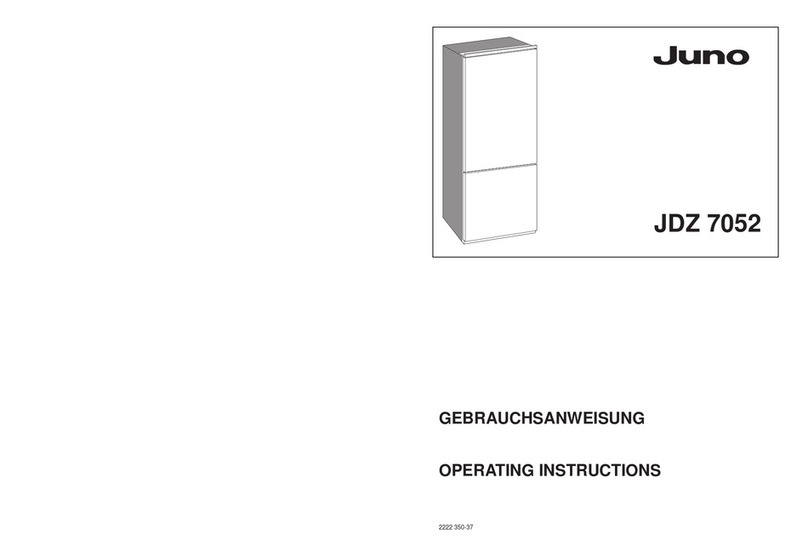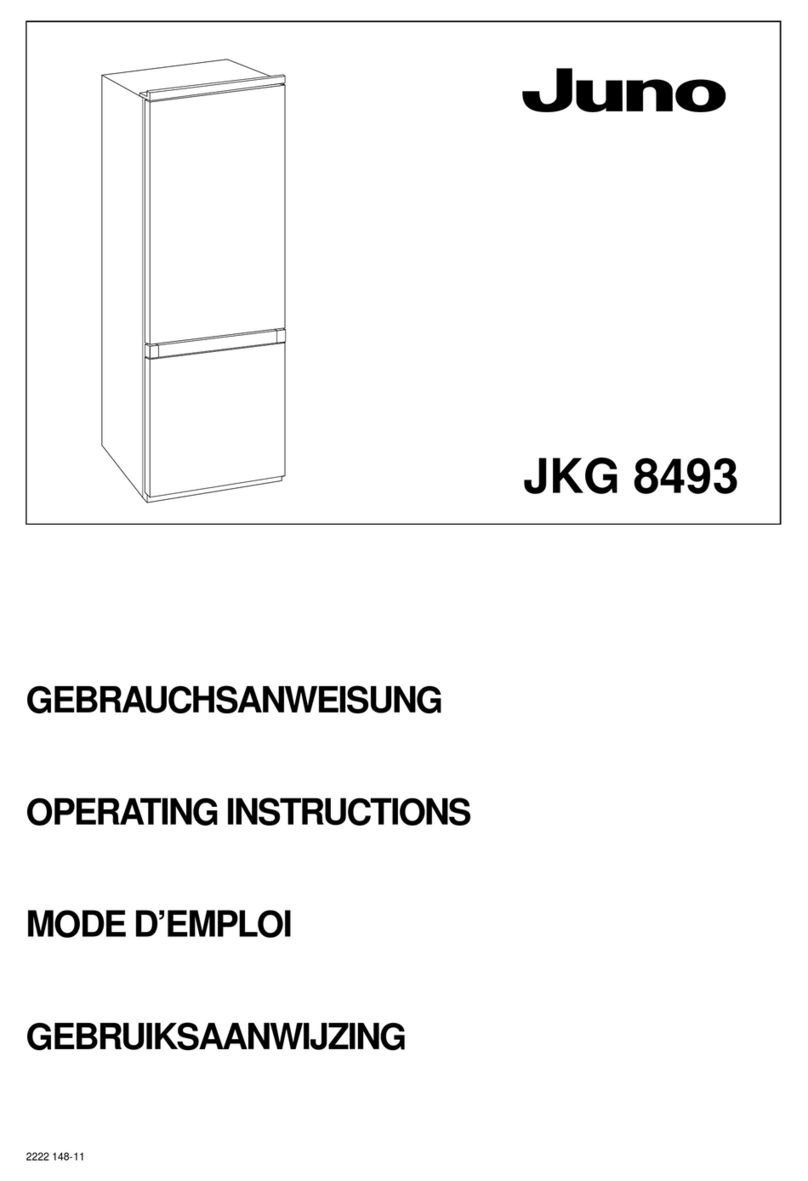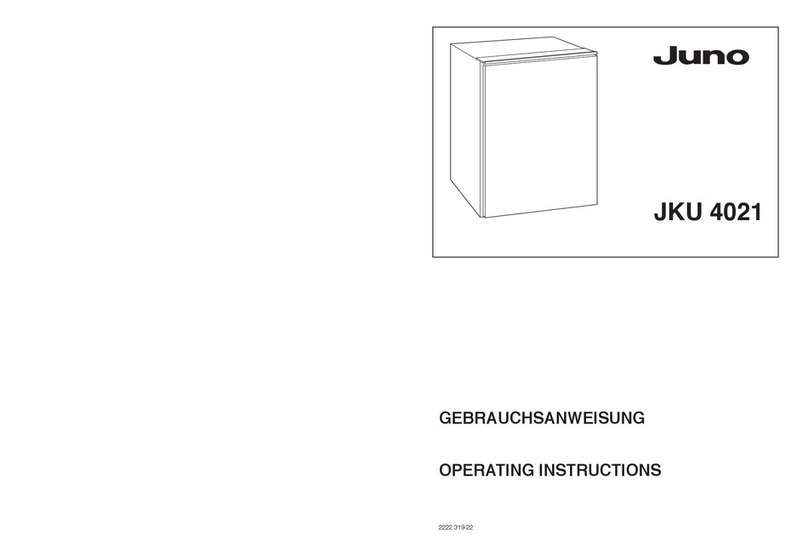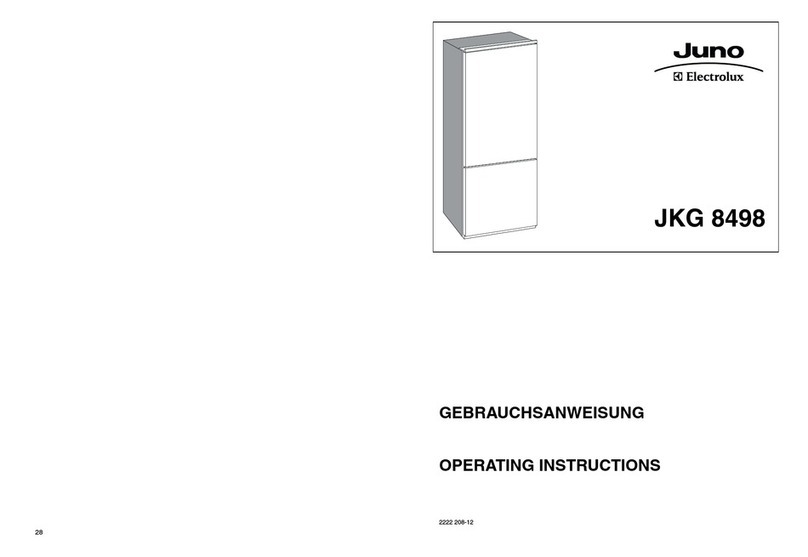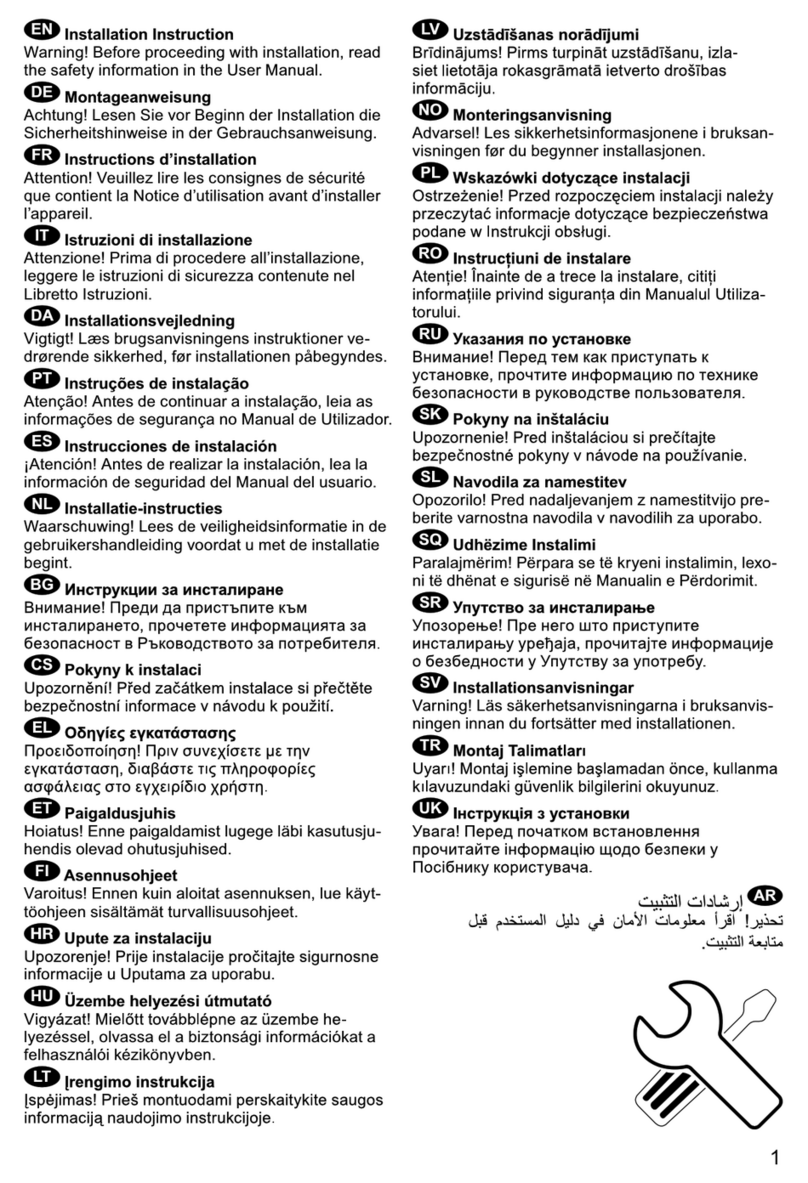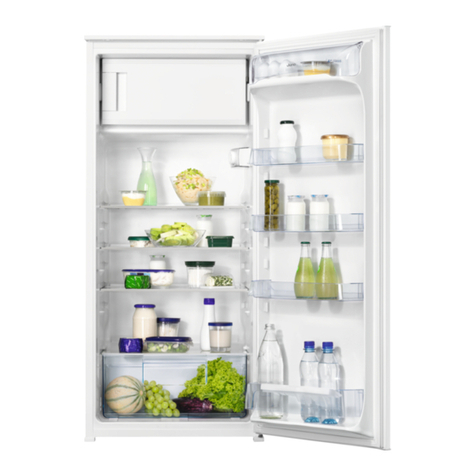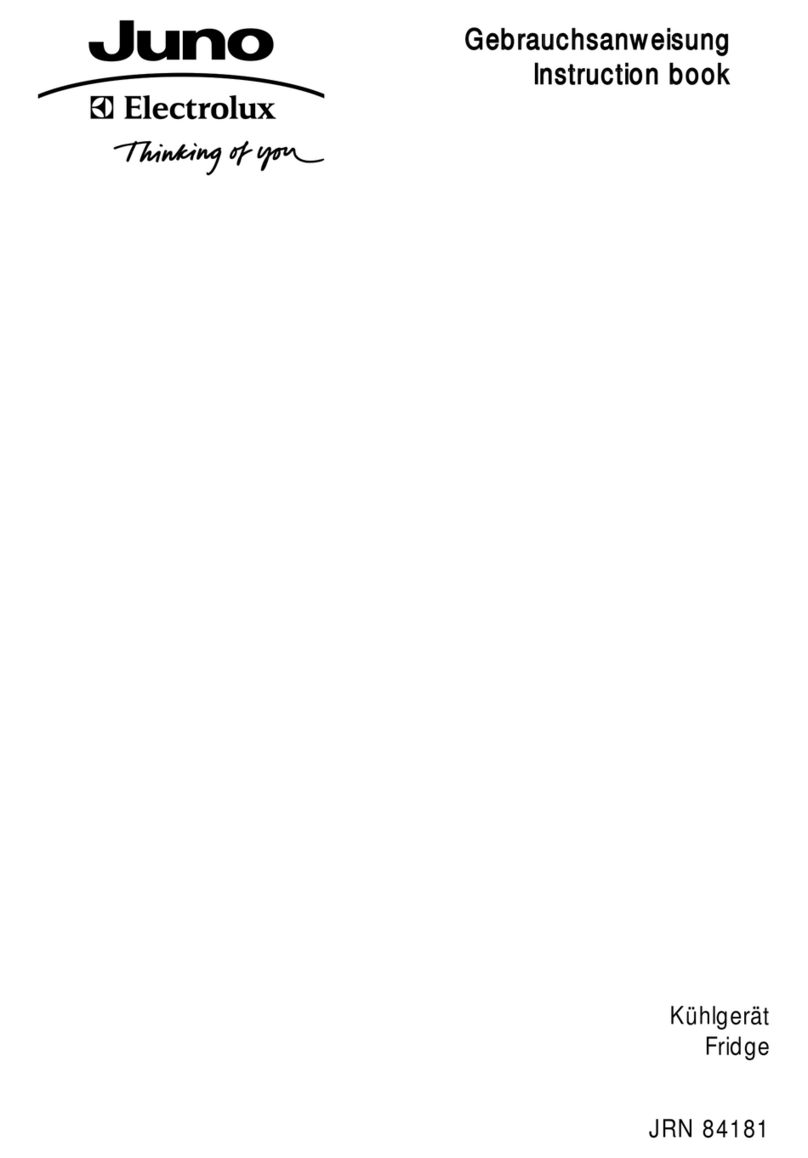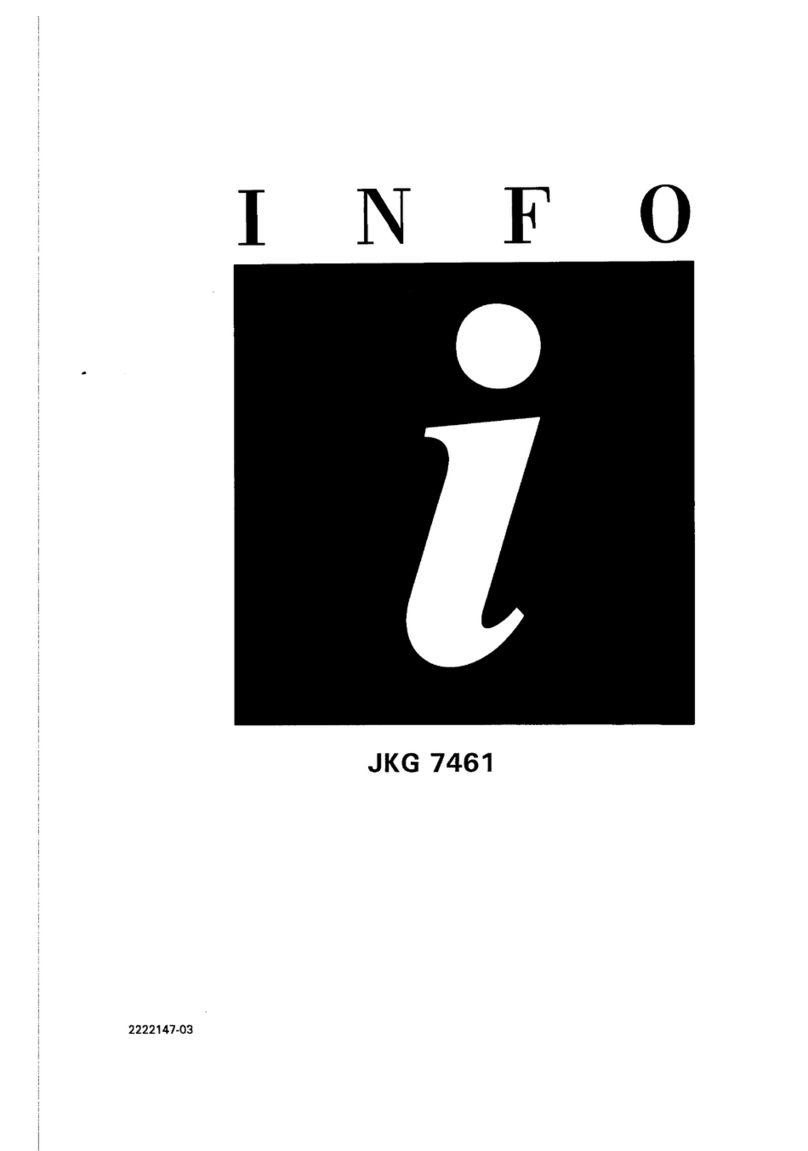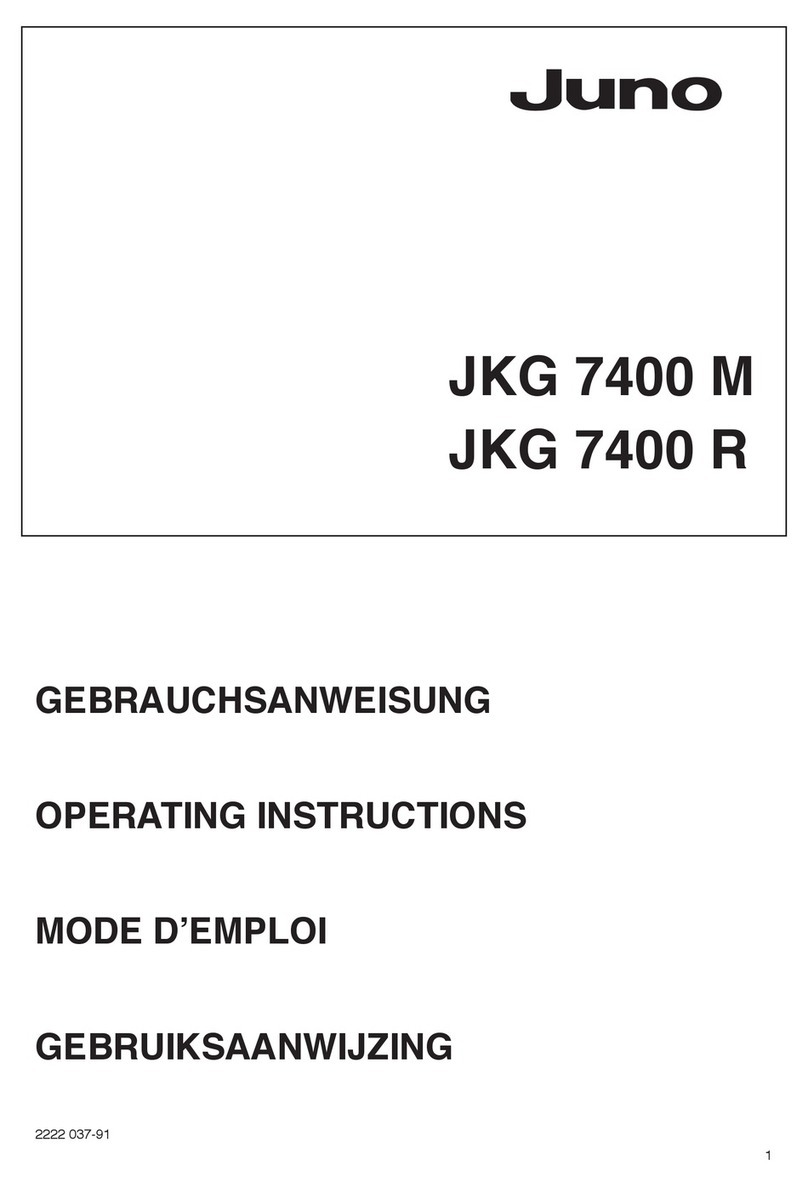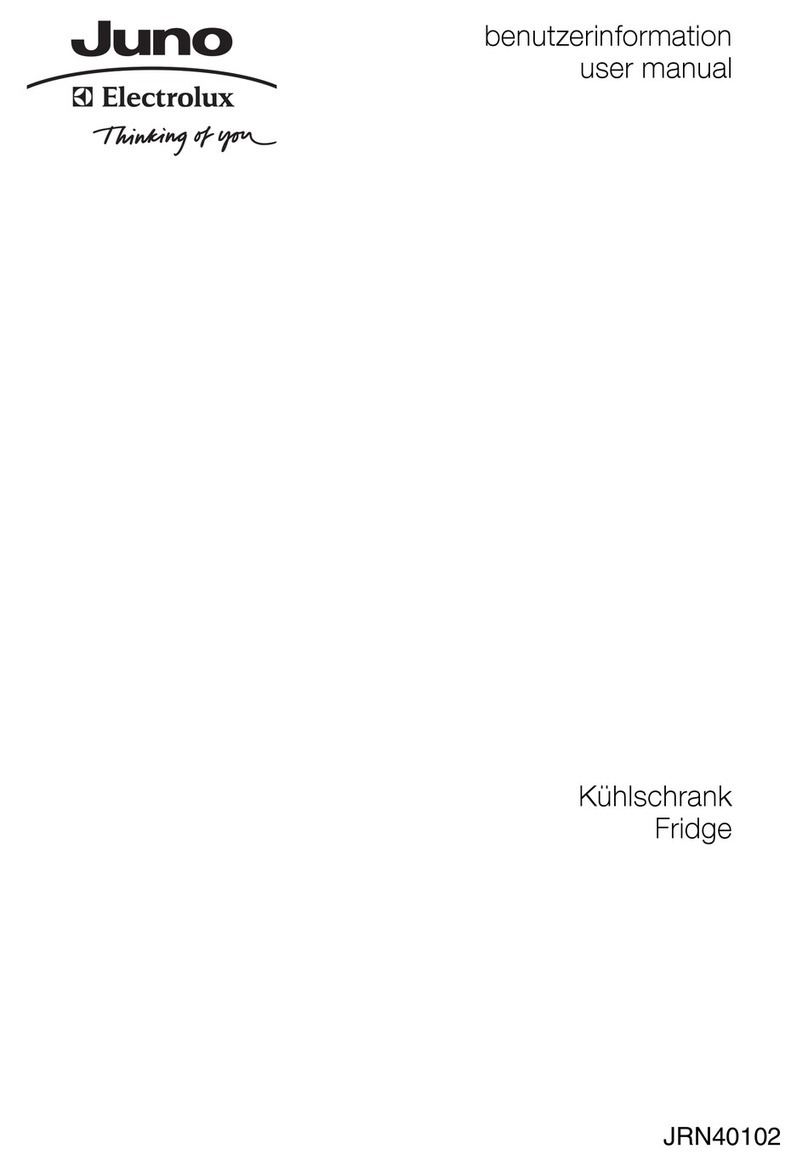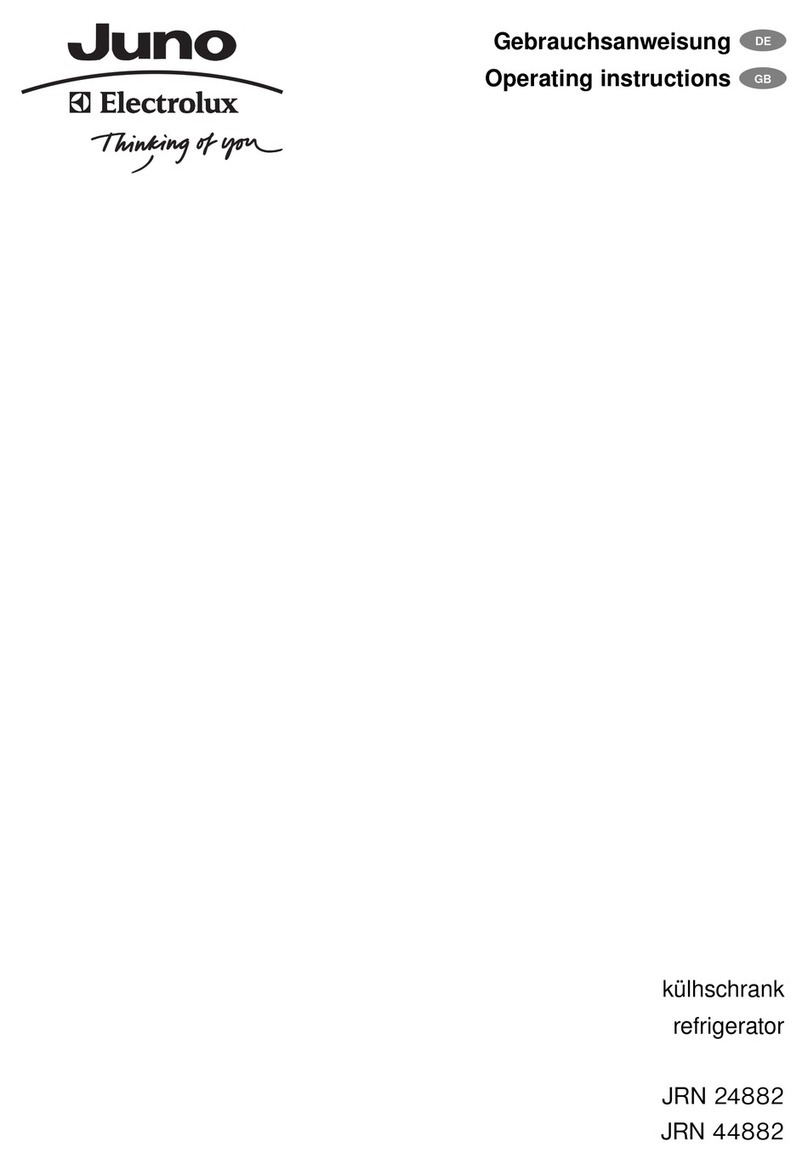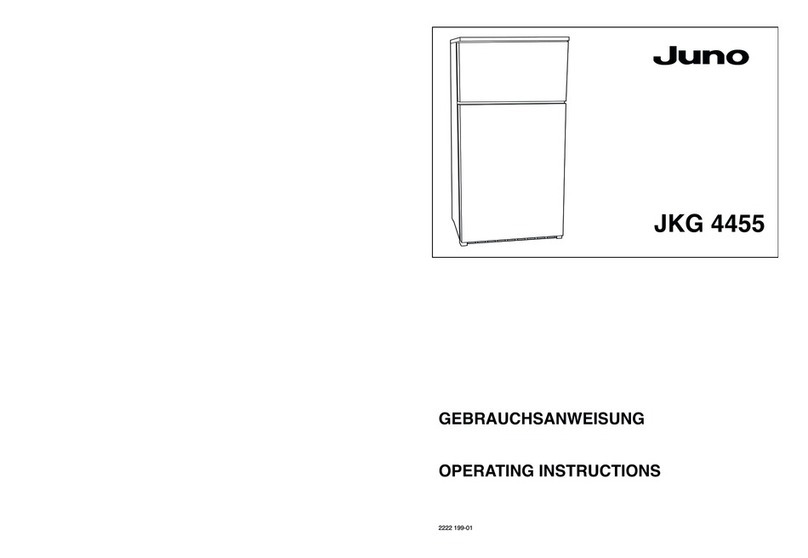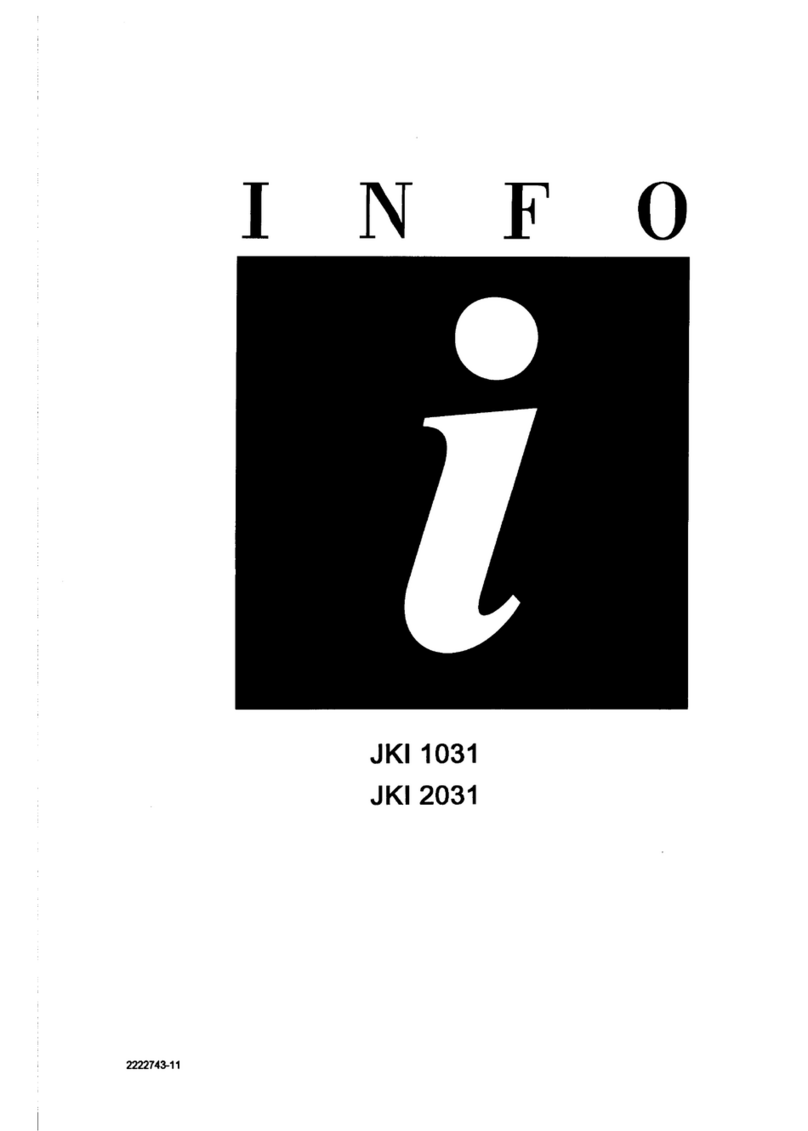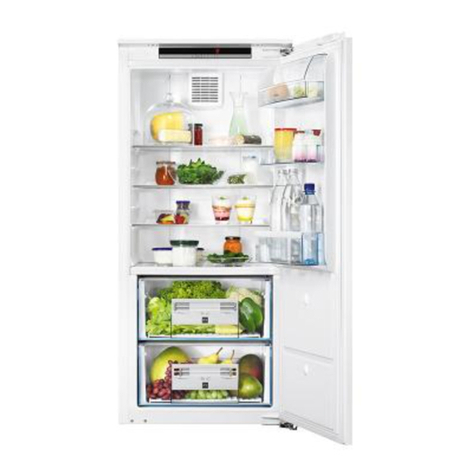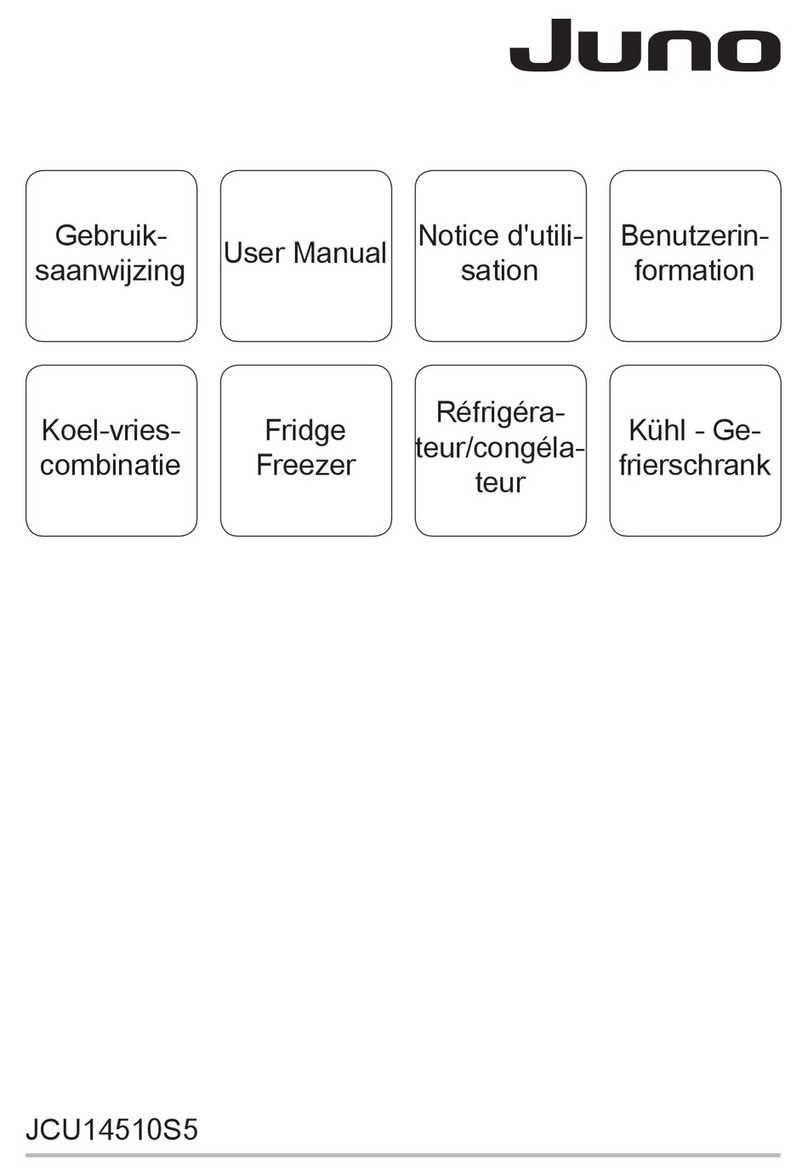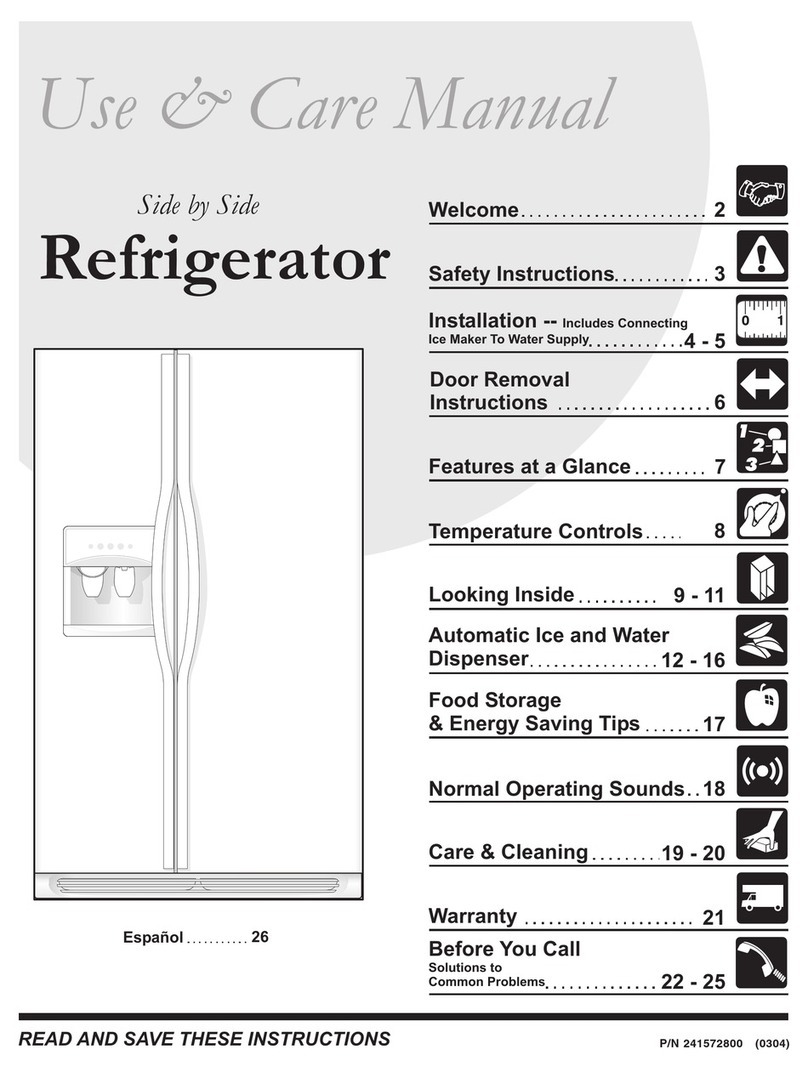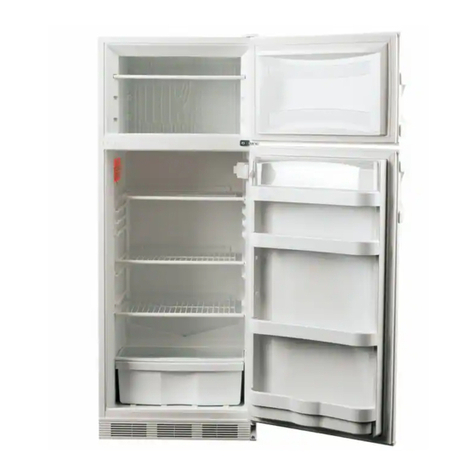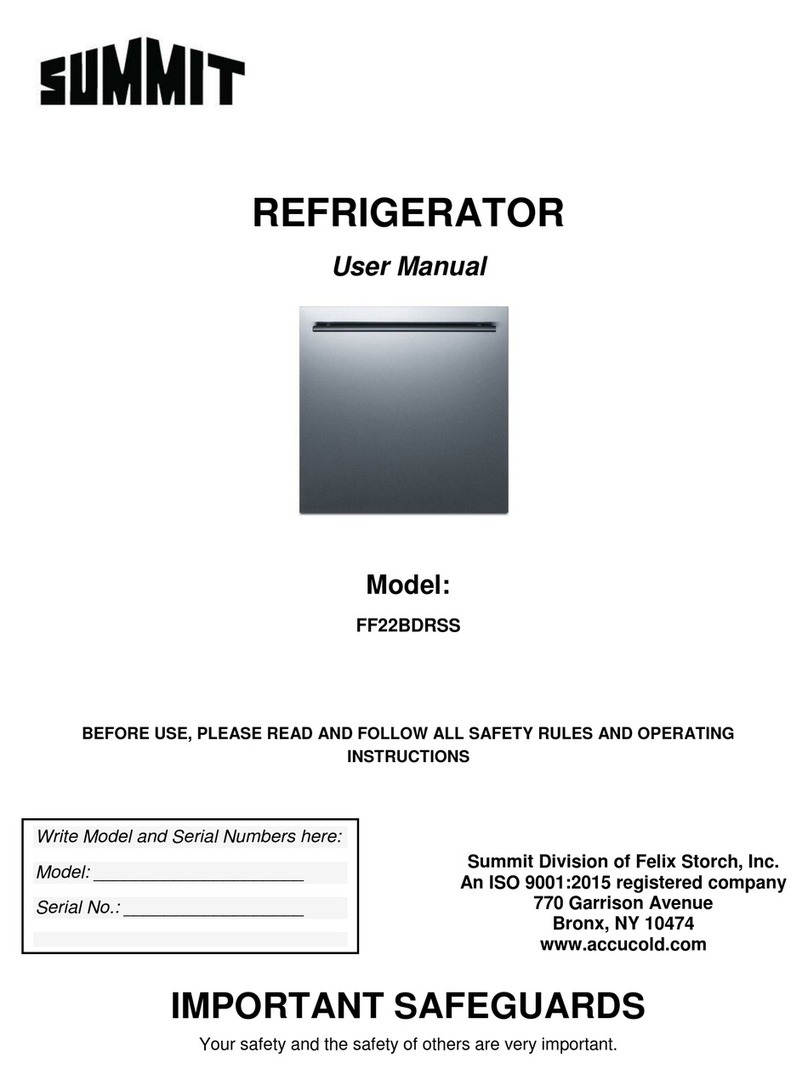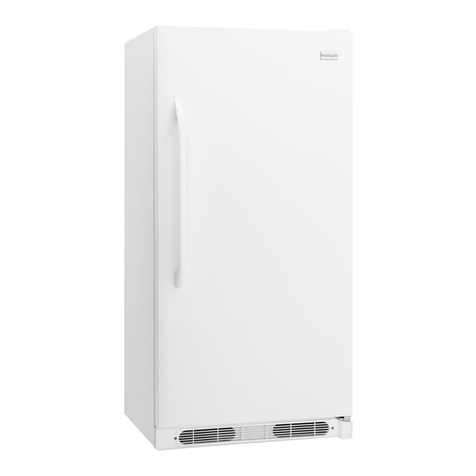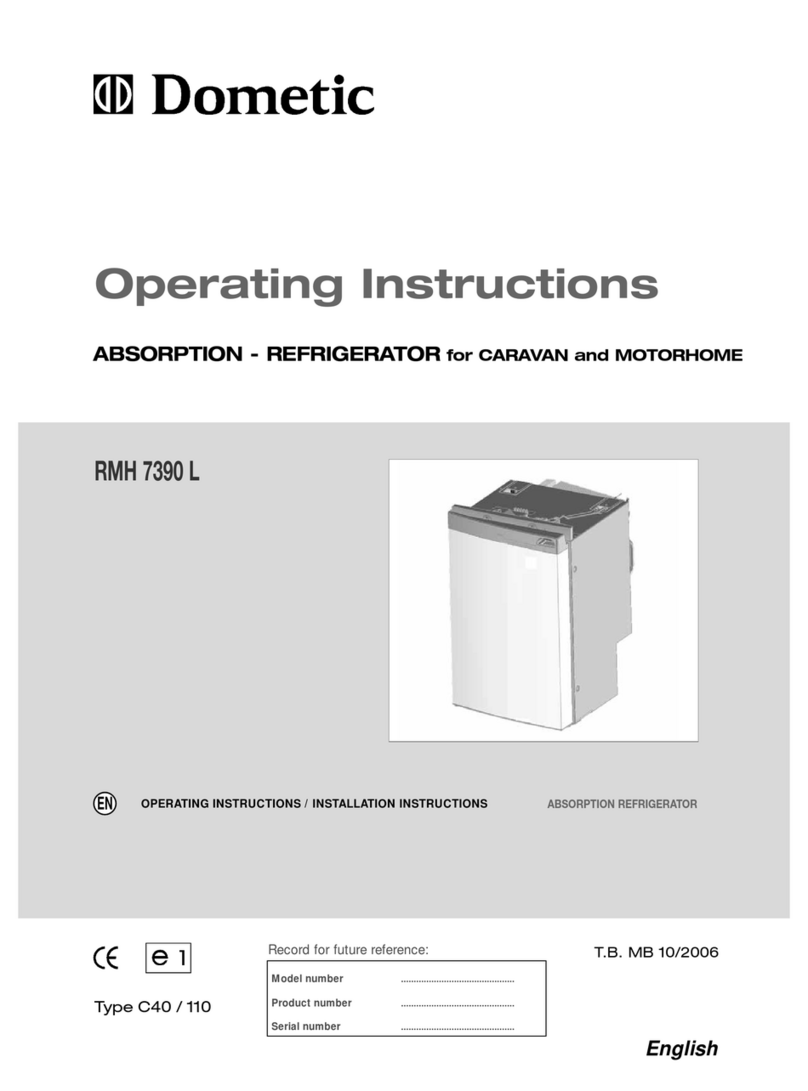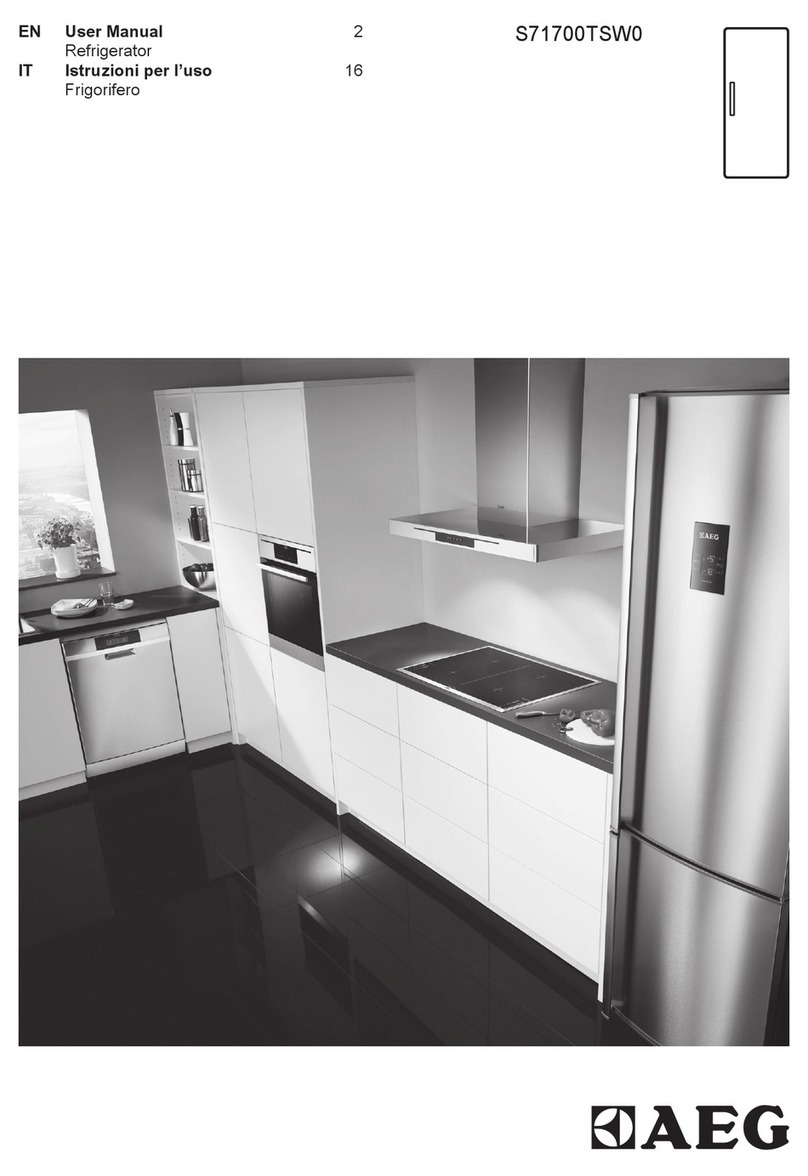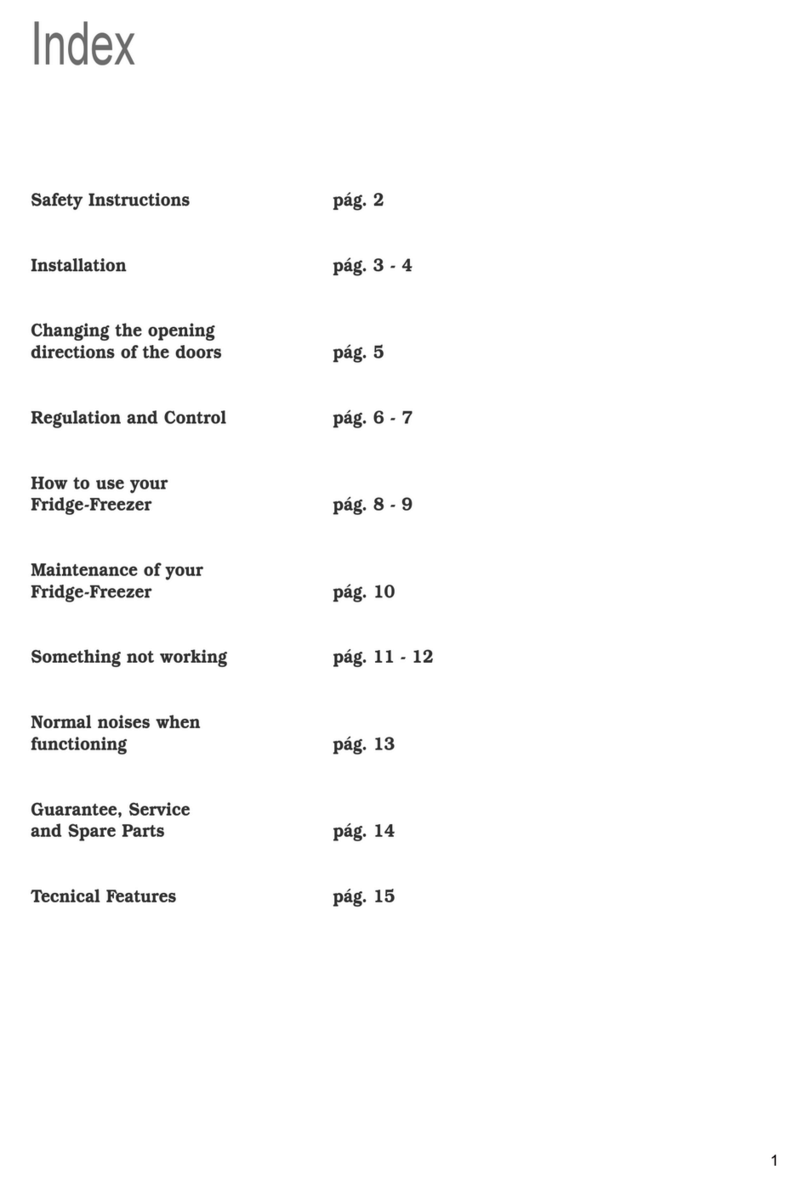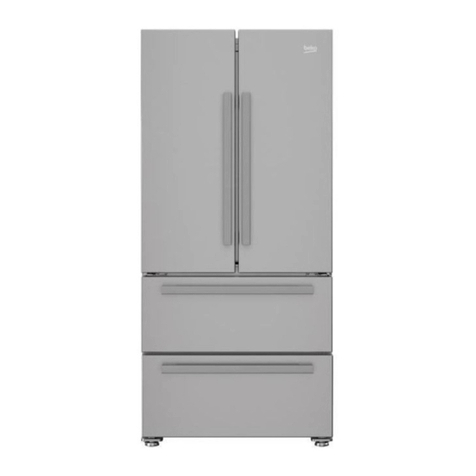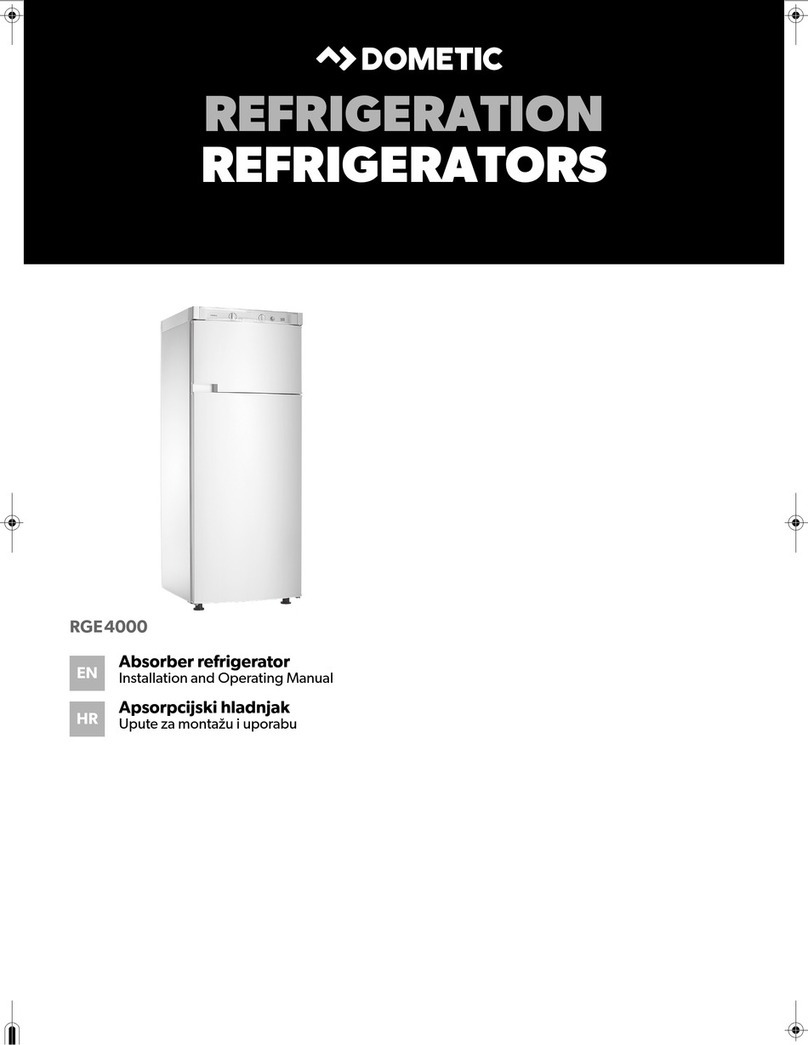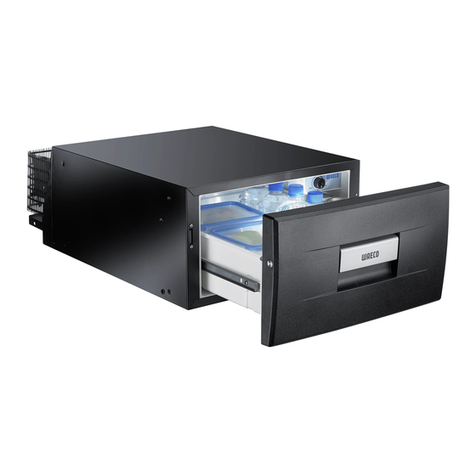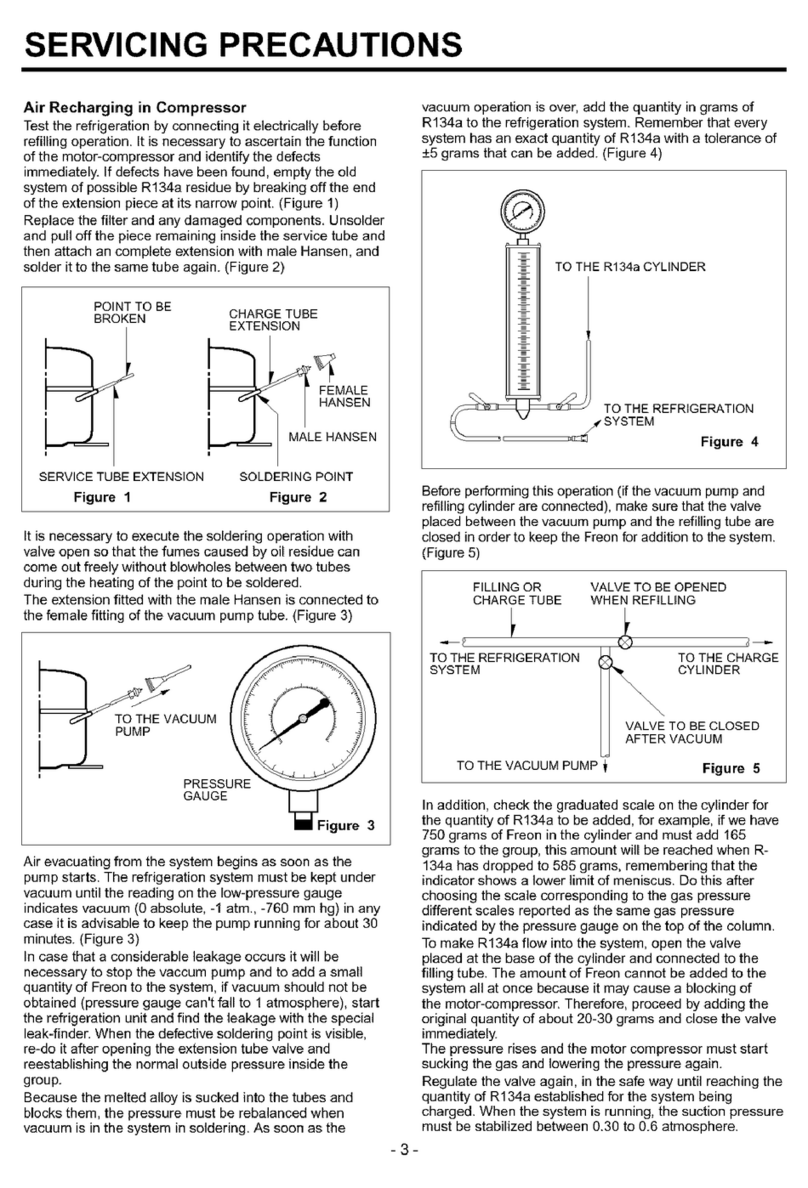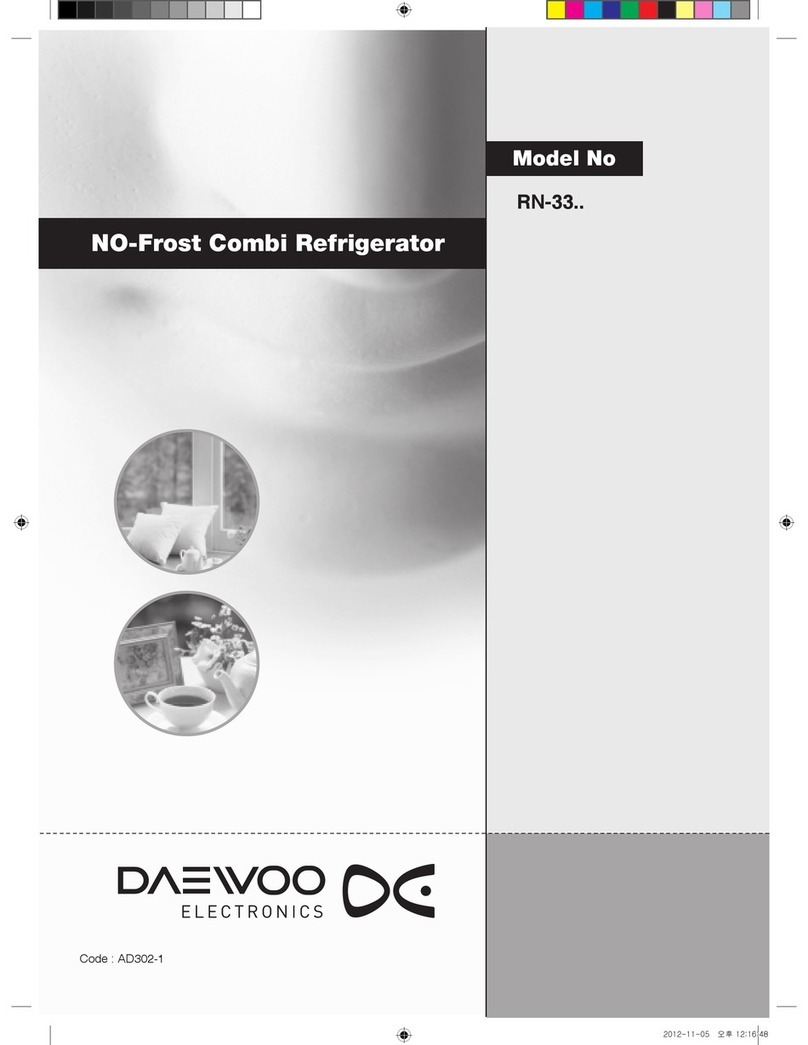20
1 Safety
The safety aspects of our refrigerators comply with
accepted technical standards and the German Appli-
ance Safety Law. Nevertheless, we consider it our
obligation to make you aware of the following safety
information:
Intended use
• The refrigerator is intended for use in the home. It
is suitable for the cooling and storing of food. If the
appliance is used for purposes other than those
intended or used incorrectly, no liability can be
accepted by the manufacturer for any damage that
may be caused.
• Alterations or changes to the refrigerator are not
permitted for reasons of safety.
• If you use the refrigerator in a commercial applica-
tion or for purposes other than the cooling of
foods, please observe all valid legal regulations for
your application.
Prior to initial start–up
• Check the refrigerator for transport damage.
Under no circumstance should a damaged appli-
ance be plugged in! In the event of damage,
please contact the vendor.
Refrigerant
The refrigerant isobutane (R600a) is contained within
the refrigerant circuit of the appliance, a natural gas
with a high level of environmental compatibility, which
is nevertheless flammable.
•Warning - During transportation and installation
of the appliance, be certain that none of the com-
ponents of the refrigerant circuit become dam-
aged.
• If the refrigerant circuit should become damaged:
– avoid open flames and sources of ignition;
– thoroughly ventilate the room in which the
appliance is situated.
Safety of children
• Packaging (e.g. wraps, polystyrene) can be dan-
gerous for children. There is a risk of suffocation!
Keep packaging material away from children!
• Please make old appliances unusable prior to dis-
posal. Pull out the mains plug, cut off the mains
cable, break or remove spring or bolt catches, if fit-
ted. By doing this you ensure that children cannot
lock themselves in the fridge when playing (there
is risk of suffocation!) or get themselves into other
dangerous situations.
• Often children cannot recognise the hazards
present in household appliances. It is therefore
important that you ensure adequate supervision
and never let children play with the appliance!
Daily Operation
• Containers with flammable gases or liquids can
leak at low temperatures. There is a risk of an
explosion! Do not store any containers with flam-
mable materials such as, for example, spray cans,
fire extinguisher refill cartridges etc in the refriger-
ator.
•Warning - Do not operate any electrical appli-
ances in the refrigerator (e.g. electric ice cream
makers, mixers etc.).
•Warning - Do not close the ventilation aperture in
the appliance casing or in the structure of fitted
units.
•Warning - Do not use any mechanical devices or
other artificial means to speed up defrosting
unless they are recommended by the manufac-
turer.
• Before cleaning the appliance, always switch off
the appliance and unplug it, or pull the house fuse
or switch off the circuit breaker.
• When unplugging always pull the plug from the
mains socket, do not pull on the cable.
In case of malfunction
• If the a malfunction occurs on the appliance,
please look first in the "What to do if ..." section of
these instructions. If the information given there
does not help, please do not perform any further
repairs yourself.
• Refrigerators may only be repaired by qualified
service engineers. Improper repairs can give rise
to significant hazards. If your appliance needs
repairing, please contact your specialist dealer or
our Customer Service.
